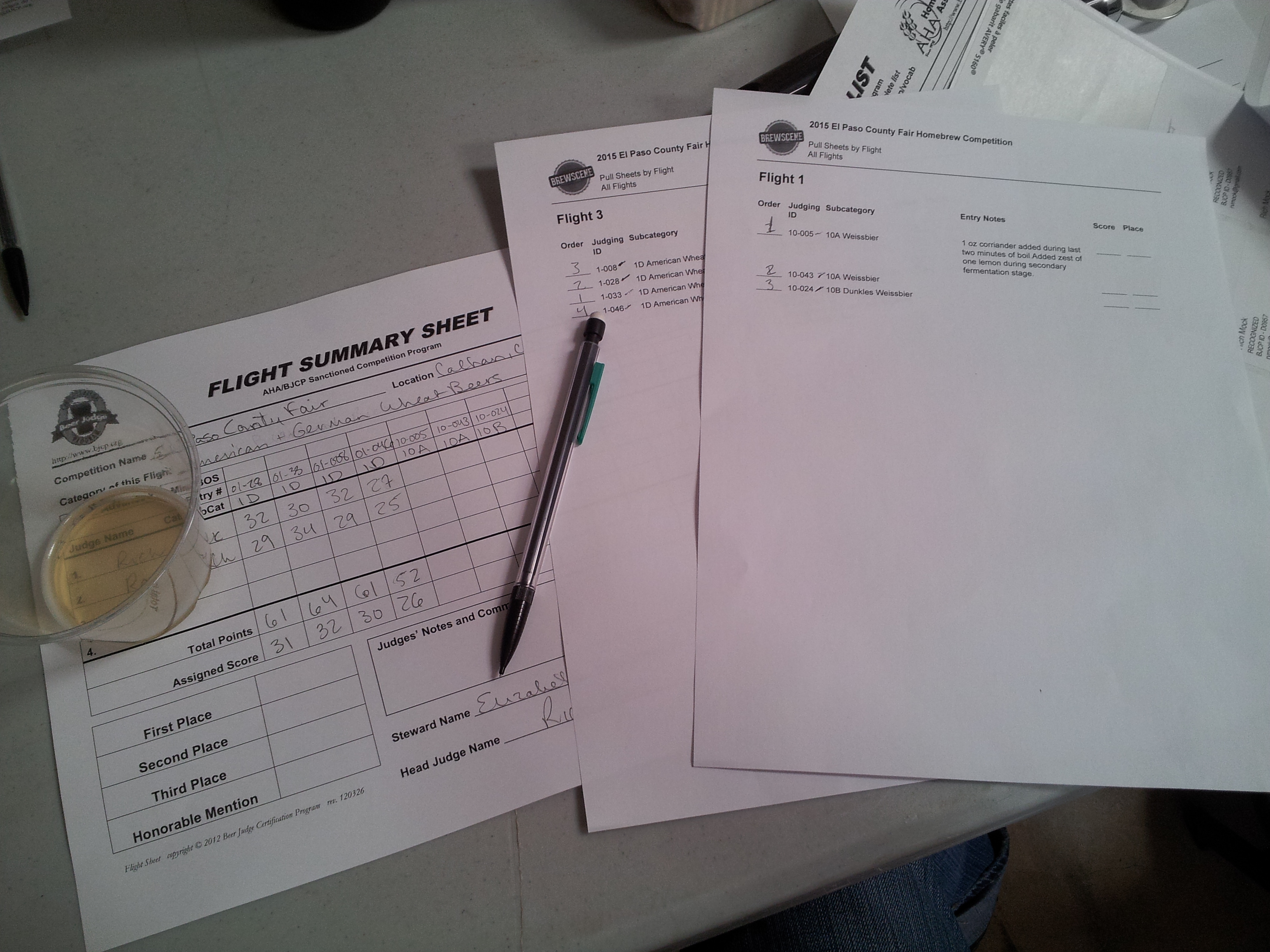Testing the 2015 Style Guidelines
 Homebrewers that enter or participate in competitions likely know that the Beer Judge Certification Program (BJCP) released new Beer Style Guidelines in May. I had the opportunity to test run the new guidelines a few weeks ago in a “summer beer” competition associated with the county fair. Here are my thoughts.
Homebrewers that enter or participate in competitions likely know that the Beer Judge Certification Program (BJCP) released new Beer Style Guidelines in May. I had the opportunity to test run the new guidelines a few weeks ago in a “summer beer” competition associated with the county fair. Here are my thoughts.
Volunteering for homebrew competitions is one of my favorite ways to get to know the local homebrewing community and to further refine my palate. At the county fair, I challenged myself by helping with categories I typically pass – wheat (both American and German varieties), fruit, and spice. I served as a steward, so I didn’t complete a scoresheet. Nontheless, I sampled consciously in order to identify the beer’s characteristics and any flaws before providing my overall impression to the judging team.
The fruit and spice beers were especially interesting because a judge needs to understand the base style in order to assess how well the adjunct ingredients were used. Balance seemed to be the biggest issue with these beers. Frequently, the fruit or spice overpowered the base beer characteristics. Ideally, these adjunct ingredients should complement and expand on the chosen beer style.
Here’s some additional advice based on my experience:
- Follow the instructions for the style you enter. For example, if the guidelines say you need to identify your base beer, do it. We sampled a couple of great beers that we couldn’t move forward because of technicalities like this.
- Read the descriptions to make sure you’re entering your beer into the correct category. There have been many changes and some of the old categories are now split into different categories in the new guidelines (for example: the Marzen (#6A) traditionally used for Oktoberfest versus modern Festbiers (#4B).)
- Know the difference between “Specialty IPA” and “Specialty Beer” (this advice is related to my previous point). The new “Specialty IPA” style (#21B) in the IPA category is limited to variations like Belgian IPA, Rye IPA, Black IPA, etc. If you loaded your IPA with fruit, chilis, exotic spices, or some other adjunct, enter it in the “Experimental Beer” style (#34C).
As a judge, I like the new guidelines overall. Although there are many more styles represented, the organization makes more sense to me than the previous guidelines. I like that the updated descriptions are more strictly focused on sensory analysis (rather than some of the brewing-focused commentary used in previous guidelines). I also like that the commercial examples have been kept to only a few and seem to include an American-brewed version when possible.
For more information about the style guideline changes, watch Gordon Strong’s presentation at the 2014 National Homebrewers Conference.
October 1st, 2015 at 4:01 pm
Lack of description is so frustrating when judging one of the aforementioned categories. It can also go the other way – don’t say a base style is American just because you used cal ale yeast (unless it has tons of hop character). I also think the new guidelines allow for more room to be “in syle”